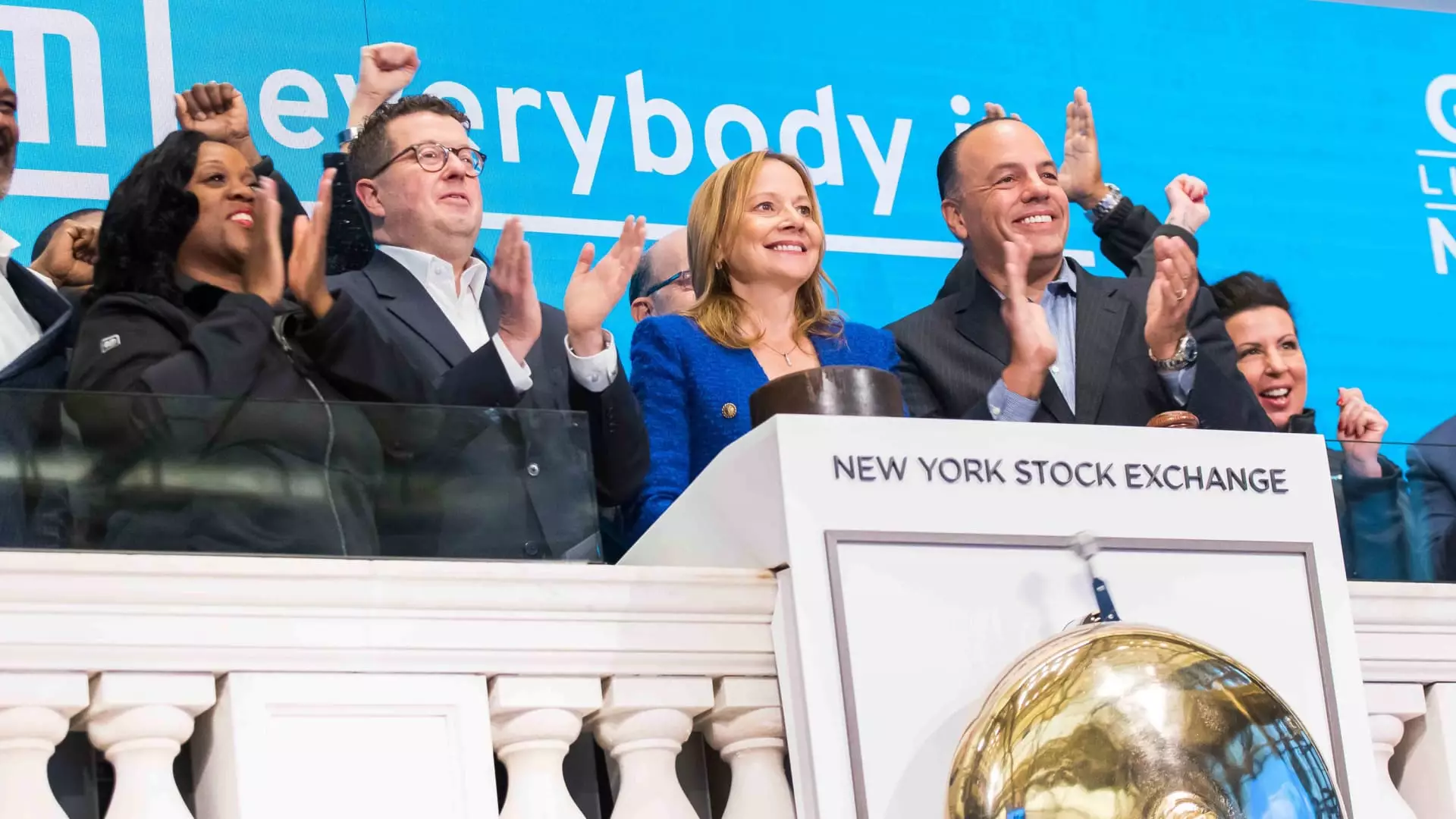The automotive industry is witnessing a tumultuous period, characterized by fluctuations in sales and profit margins. In an effort to navigate these challenges and underscore its commitment to shareholders, General Motors (GM) has announced a series of strategic initiatives. These include raising its quarterly dividend and embarking on a significant share repurchase program, both aimed at rewarding investors while reinforcing confidence in GM’s financial health.
A Robust Dividend Increase
General Motors has decided to elevate its quarterly dividend by 25%, bringing it to 15 cents per share. This move not only aligns GM with notable competitors, such as Ford Motor Company, but also reflects the automaker’s determination to provide value to its shareholders despite the overarching industry pressures. The forthcoming dividend will be implemented in the next planned payout, which GM aims to announce in April. Such a dividend increase is not merely a numbers game; it is a strategic messaging tool to signal resilience and operational strength, particularly during a period of declining overall sales in the automotive sector.
Initiating a Share Repurchase Program
In tandem with the dividend increase, GM is launching a new $6 billion share repurchase program designed to elevate shareholder value further. The company expects to complete $2 billion in buybacks within the second quarter. Share repurchase programs are often construed as a bullish signal by companies, indicating management’s belief that the stock is undervalued. Mary Barra, the CEO, underscored this sentiment, emphasizing the company’s ongoing commitment to a capital allocation strategy that balances reinvestment in the business, maintaining a strong balance sheet, and returning profits to shareholders.
Despite the positive actions taken by GM, the market has reacted unfavorably, with the automaker’s stock plummeting by over 12% in 2023. Analysts attribute this downturn to various factors, including stagnant industry sales, regulatory uncertainties regarding tariffs, and a perceived lack of growth opportunities. In this climate, GM’s plan to buy back a substantial number of shares and enhance dividend payouts might be viewed as proactive measures to deter further declines and reassure investors of the company’s stability.
According to GM’s board, the actual number of shares repurchased under the $2 billion plan will depend on the average daily price of GM’s common stock during the program’s duration. This careful approach highlights a strategic alignment with shareholder interests while being mindful of market volatility. The execution of the share repurchase plan will involve financial institutions like JPMorgan and Barclays, which are expected to help GM navigate this undertaking effectively.
As GM implements these financial strategies, the company remains focused on its long-term financial health and projected outcomes. The firm has provided ambitious guidance for 2025, forecasting a net income attributable to stockholders ranging between $11.2 billion and $12.5 billion. This translates to earnings per share (EPS) expectations of $11 to $12. Additionally, anticipated adjusted earnings before interest and taxes (EBIT) are pegged between $13.7 billion and $15.7 billion, further underscoring GM’s future growth potential.
However, this bullish outlook does not erase existing challenges. CFO Paul Jacobson’s confidence in GM’s financial strategy reflects an adaptive approach to market evolution, including readiness to react to changes in public policy. Such an attitude toward financial management is critical, particularly in an industry known for its cyclical nature and susceptibility to economic fluctuations.
General Motors’ recent announcements regarding dividend increases and share repurchase programs signal a proactive approach to reward shareholders while reinforcing its market position amidst accelerating industry complexities. While challenges abound, GM’s moves could foster investor confidence and potentially stabilize its stock value. The company’s strategic maneuvers not only illustrate a commitment to shareholders but also embody a broader narrative of resilience in the face of adversity. As GM navigates these dynamics, the automotive landscape will be closely watching its responses and results in the months to come.

